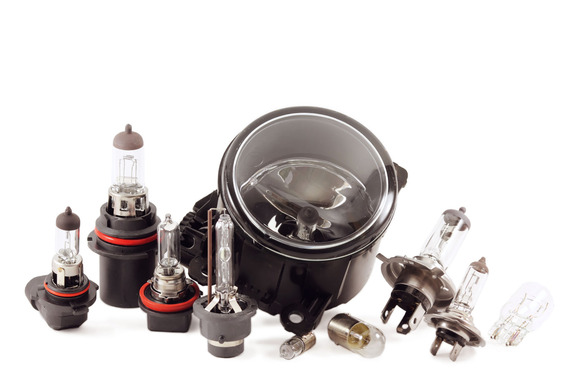
Any driver will think about improving the light of the headlights sooner or later. However, before deciding to replace halogen lamps in xenon lights, it is necessary to know how to do it correctly and to present the legal consequences of such a change. Xenon installation requirements
Xenon installation requirements
It is worth starting with the fact that the xenon installation in the headlamps intended for halogen lamps is prohibited by the regulations in force. In terms of common sense, this means that the lights of gas-discharge lamps installed in the "halogen" headlamp are blind to oncoming drivers and may lead to an emergency.
Any law has a basis and a ban on unauthorized modification of the headlights is based on the experience and technical requirements of the headlight frames in the US, Europe and other regions.
The use of xenon headlamps as such is not prohibited, but is subject to a number of conditions. The operation of the "factory" headlamps, i.e. the vehicle manufacturer, is permitted. When installing a non-core xenon, it is necessary to modify the headlamps to comply with the standards or to buy altered headlamps from companies capable of documenting that their products comply with the Russian GOST. If their conditions are met and a possible expert appraisal will not reveal the violations, you will be able to operate the car with the non-regular xenon headlamps.
The ban on the installation of xenon lamps is prescribed in Article 12.4. hours 1. RF Administrative Code: " Installation on the front of the vehicle
Why is the xenon glare dazzling?
Xenon lamps are much more powerful than halogen, that is, emitting more intense light. The brilliance depends on the power of the lamp and the angle of radiation. Since halogen lamps are weaker, their light is collected in a narrow beam. This allows the transmission of all the power of the radiation in one direction.
If you install into headlamps with halogenuses, xenon lamps, the light beam will remain as it was before, and the radiation capacity will increase. The headlights will start to blind the drivers of oncoming cars.
In addition, the beam of the light of both headlamps (especially in the case of the use of halogen lamps) has a clear border at the top, the so-called "galka" (a dark border resembling the shape of the bird's deployed wings).
The official line separating the lit and unlit areas is called the "cut-off" (TAG). The adjustment of the height of the CTU to the height of the STG shall be achieved not by adjustment, but by the shape of the reflector and by applying the bounding beam of the curtain, and in the case of xenon headlamps the application of special optical lenses and proofreader.
The narrow beam of bright light is dangerous in that the eyes of the man behind the wheel have adapted too long if a glance from the lighted field is sharply changed to an unlighted field. In other words, halogen lamps with xenon lamps are blind not only to the oncoming drivers, but also to the owner of the car.
When installing into simple reflectors, a diffuse but still powerful light will inevitably fall into the zone above the STG and blind oncoming drivers, even if the STG is correctly mounted.
How to properly set Xenon to all requirements
The luminous flux of xenon headlamps fitted with "correct" reflectors and special lenses will not be very different visually (that is, on the side of the driver) from the light of regular halogen headlamps. The beam of the xenon headlamps with a wider reflector with a wider reflector will be wider, and the "halka" will have a different shape by applying the lens with the curtains. Thus, a whole block of reflector, lens and mounting position for the lamp must be installed in the headlamp with the lamps. The light of the converted headlamps shall be in accordance with the current GOST.

Additional requirements for xenon headlamps
According to the instructions, xenon headlamps shall be fitted with high-pressure heaters. This requirement is not due to the non-glazings of the contaminated glass, but by the light dazzle through the dirty glass, the light dazzle the oncoming drivers more than through the pure.
In addition to the washer, the requirements of the technical regulations in force at the time of its occurrence were prescribed to have automatic corrector headlamps capable of changing the height of the light beam, depending on the terrain and the load on the car. The casus was established because the cars of the 1990s were often equipped with xenon headlamps with a mechanical proofreader or at all without a proofreader. In this regard, after disputes and debates in the current GOST R 51709-2001, changes were made from 23.06.09, and the mandatory requirement for an automatic proofreader (para. 4.3.2.2.) was deleted. Accordingly, the inspector does not have the right to require the presence of a proofreader on the glazing.
What is to be done by who installs the xenon yourself? Automatic proofreader is a complex electronic and mechanical knot, and can only be installed in a specialized technical center, but the budget of the project will grow in times, making it pointless.
Thus, it is possible to place the xenon in the headlamp without breaking the rules in force, only by replacing the lamps with the former (or new) headlamp with the "xenon" marking on the glazing, and even if the cars like yours were to be replaced. For example, the products of the Volga automobile plant with xenon headlamps were never produced.
If you remake the headlights in the xenon even by installing special lenses, the existing legislation will be violated, although the oncoming drivers will not be blind if the headlights of your car are correctly set up.







